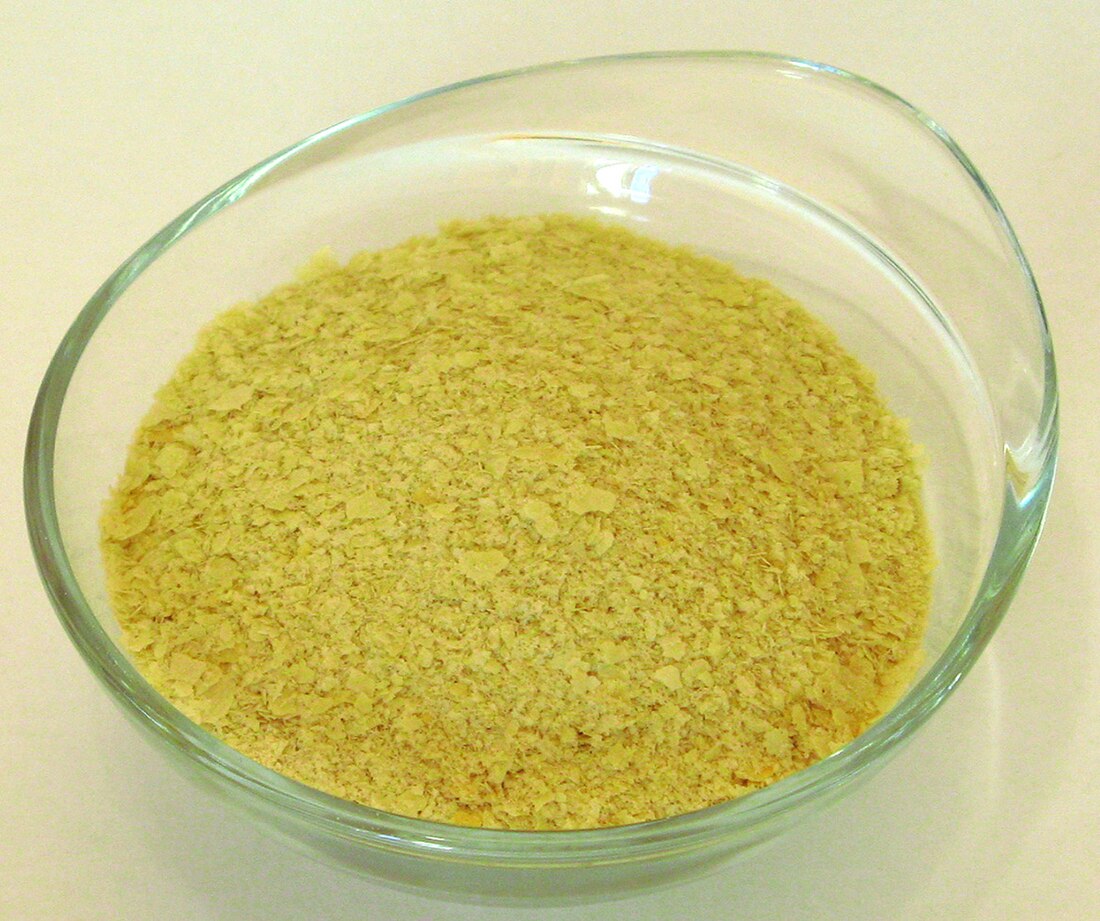Top Qs
Timeline
Chat
Perspective
Nutritional yeast
Type of deactivated yeast From Wikipedia, the free encyclopedia
Remove ads
Nutritional yeast (informally called nooch[4]) is a deactivated (i.e., dead) yeast, often a strain of Saccharomyces cerevisiae, that is sold commercially as a food product. It is sold in the form of yellow flakes, granules, or powder, and may be found in the bulk aisle of natural food stores. It is used in vegan and vegetarian cooking as an ingredient in recipes or as a condiment.[5]


It is a source of some B-complex vitamins and contains trace amounts of several other vitamins and minerals.[6] It is often fortified with vitamin B12.
Nutritional yeast has a strong flavor described as nutty or cheesy for use as a cheese substitute. [7] It may be used in preparation of mashed potatoes, tofu, or popcorn.[8]
Nutritional yeast is a whole-cell inactive yeast that contains both soluble and insoluble parts, which is different from yeast extract. Yeast extract is made by centrifuging inactive nutritional yeast and concentrating the water-soluble yeast cell proteins which are rich in glutamic acid, nucleotides, and peptides, the flavor compounds responsible for umami taste.[citation needed]
Remove ads
Commercial production
Nutritional yeast is produced by culturing yeast in a nutrient medium for several days. The primary ingredient in the growth medium is glucose, often from either sugarcane or beet molasses. When the yeast is ready, it is killed with heat and then harvested, washed, dried and packaged. The species of yeast used is often a strain of Saccharomyces cerevisiae.[9] The strains are cultured and selected for desirable characteristics and often exhibit a different phenotype from strains of S. cerevisiae used in baking and brewing.[10]
Remove ads
Nutrition
In a reference amount of 15 g (0.53 oz), one manufactured, fortified brand is 33% carbohydrates, 53% protein, and 3% fat, providing 60 calories. Levels of B vitamins in the reference amount are multiples of the Daily Value.
Nutritional yeast contains low amounts of dietary minerals, unless fortified.[11]
There may be confusion about the source of vitamin B12 in nutritional yeast, as yeast cannot produce B12, which is naturally produced only by some bacteria.[12] When it is fortified, the vitamin B12 (commonly cyanocobalamin) is produced separately and then added to the yeast.[citation needed]
Remove ads
See also
References
External links
Wikiwand - on
Seamless Wikipedia browsing. On steroids.
Remove ads
